with David Bone


I see potential research projects almost everywhere I look. Unfortunately, I only have time for a few of them:
The London Clay Formation of Bognor Regis. I have been studying the London Clay exposed on the foreshore at Bognor since my teenage years. Local geologist, Martin Venables, did a huge amount of research on this area but there is still significant potential for further study and new discoveries.
The Reading Formation of Felpham, near Bognor. In 1986, I wrote a paper on these Eocene deposits which are exposed on the foreshore and contain a truly remarkable example of in-situ palm tree stumps and a fossil flora of national importance. Now designated a geological SSSI, I am sure there is plenty more to discover about these beds.
The ‘Bracklesham Beds’ of Bracklesham Bay. I have been leading fossil hunts here since at least 1985, but keep my eyes open for anything unusual. Personally, I don’t bother too much with the fossil hunting but wander off down the beach to look at the lesser known areas and channels fills of recent river alluvium that yield interesting arrays of animal bones and occasional archaeology.
Building stones. In the early 1990s, my wife and I made the exciting discovery of a previously unrecognised local building stone, which we called Lavant Stone. It was used throughout the Chichester district and surrounding areas in Roman and medieval times. From this has developed an interest in building stones, particularly as used in our medieval churches.
The Mixon reef, Selsey. This is an Eocene age limestone that outcrops as an offshore reef, south of Selsey. It has been used as a source of building stone from Roman times to the 19th C. My wife and I have recently published a definitive article in Sussex Archaeological Collections on its quarrying history.
Chichester City Walls. Although mostly medieval or later in date, a few traces of the original Roman walls still remain. The original stone cladding, recently revealed by archaeological investigations has set me off on a fascinating line of enquiry.
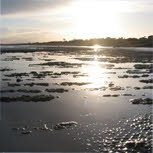
London Clay at Bognor
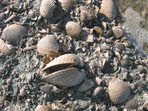
Cardita Bed, Bracklesham
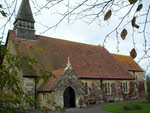
Building stones & Mixon
St Peter’s at Selsey
Rare survival of Roman wall cladding, Chichester
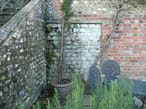
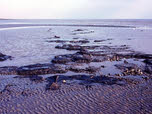
Lignite bed at Felpham